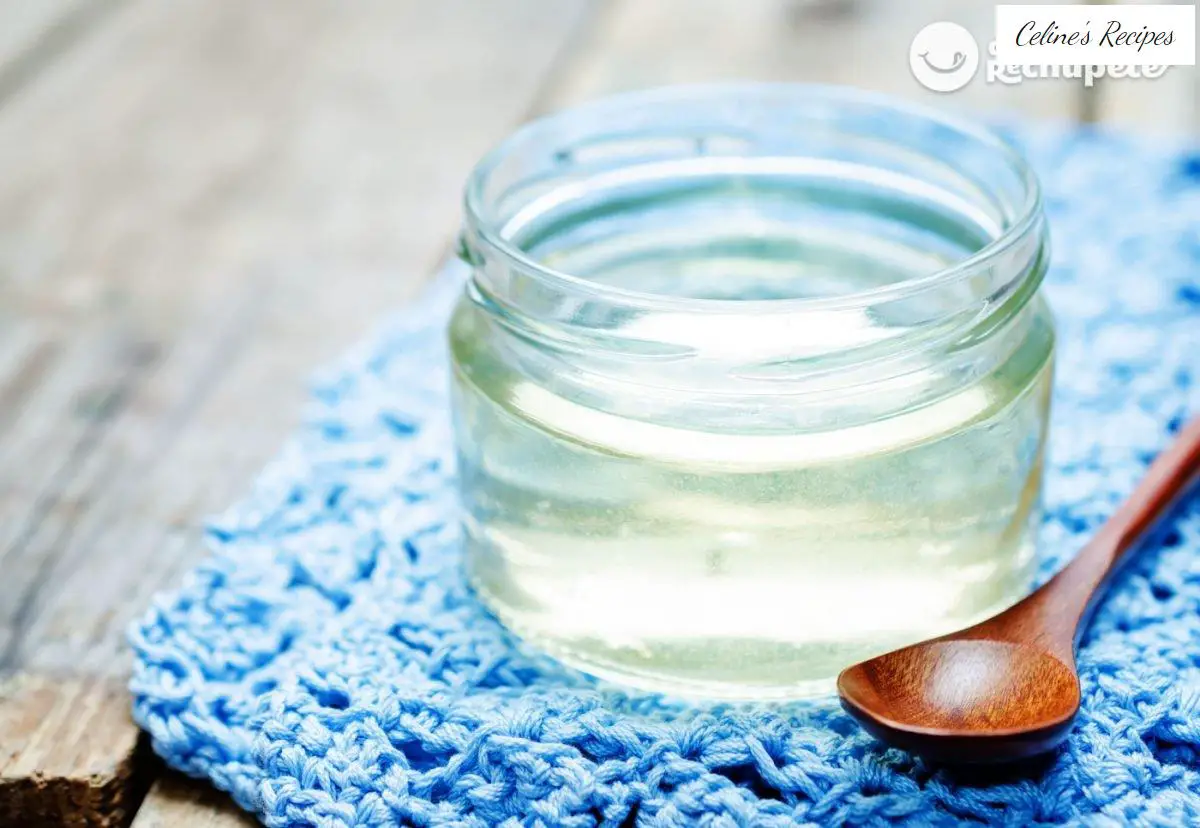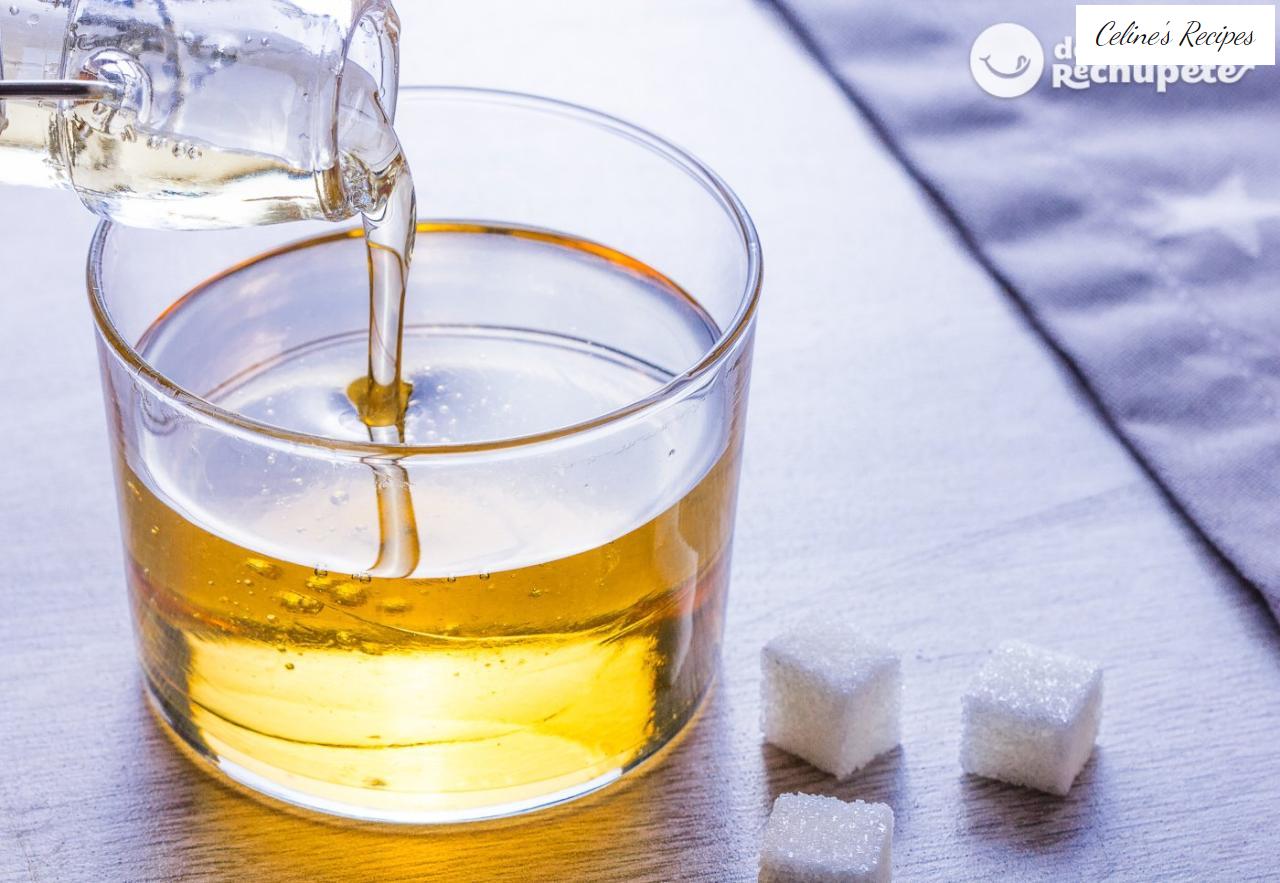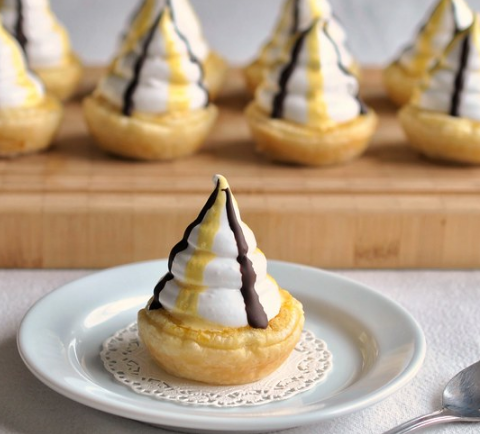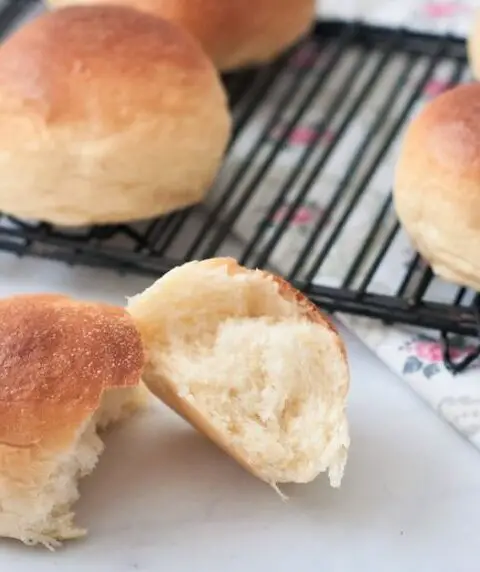
For 6
€ 0.3 /pers.
280 kcal/100g
Ingredients
- 350 g of white sugar
- 150 ml of mineral water (at room temperature)
- Of the soft drinks sold in Mercadona: 2.2 g of Acidulants (tartaric acid and malic acid) (1 white sachet)
- 3.3 g of baking soda or raising agent (1 purple sachet)
How to make invert sugar and what we are going to use it for. If you are one of those who, like us, read the ingredients of everything you buy to see what we put in our mouths, you have probably seen it several times. Invert sugar. To be honest, the tagline “inverted” tells us little or nothing, and can cause a lot of confusion.
That is why today we are going to talk about this type of sugar. What is it, what is it for, how to make it or how to use it? …and more doubts that have surely crossed your mind. For now we assure you that it is super easy to do and that the result is phenomenal, so we encourage you to do it and add it to your recipes, especially in your desserts and sweets .

What is invert sugar and what is it for?
This may be the most important question of all: What is invert sugar? The answer is simple. Invert sugar is the product of a chemical reaction that occurs in sugar , it is the disintegration by hydrolization or hydrolysis of common sugar or sucrose into glucose and fructose .
This hydrolysis can be carried out by three methods .
- By invertase enzyme. An enzyme called invertase (β-fructofuranosidase, EC 3.2.1.26) is used .
- By the action of an acid at elevated temperature. This happens when we prepare fruit jams, naturally obtaining invert sugar.
- Passing the solution through sulfonic resins.
In any of these ways we manage to increase the sweetening capacity by 30% more than that of normal sugar, achieving a higher level of sweetness without using too much sugar. It maintains moisture in the dough and that helps keep sponge cakes and other doughs fluffy for much longer. Invert sugar also accelerates fermentation in doughs, which is why it is also widely used in bakery.

Uses in the kitchen
- Reduce the use of sugar while maintaining the level of sweetness.
- It retains moisture, very useful in pastries and pastries, preventing drying out.
- It hinders the crystallization of sugar, which helps in the production of ice cream.
- Accelerates the fermentation of doughs that contain yeast.
As you can see, the advantages of invert sugar are several, which is why its use in cooking and baking has spread. Next, so that you don’t get confused, I leave you with the proportions to apply according to the type of preparation we want to do:
- In bakery, replace 50% of the sugar in the recipe with invert sugar.
- In our ice creams, 25% of the sugar in the recipe would be replaced with invert sugar.
- In pastries/pastries, between 10% and 20% of sugar in the recipe is inverted sugar.

How is invert sugar obtained?
Maybe saying that sugar is obtained through a chemical reaction made you panic a little, but don’t worry. We are not going to ask you to become Walter White today.
In reality, the process is very simple and we will only need 350 g of white sugar, 150 ml of bottled water, raising agent (bicarbonate) and acidulants (malic acid and tartaric acid).
In the case of the raising agent and acidulant, I have used the famous soft drinks sold at Mercadona. Although if you don’t have them or can’t buy them, they can be replaced with 3 grams of baking soda and a tablespoon of lemon juice.
- We put the water with the sugar in a saucepan. We stir to mix, being careful that the edges are not splashed or with traces of sugar. We bring it to medium-high heat, and with the thermometer we measure the temperature.
- When it reaches 100°C, remove from heat. If you don’t have a thermometer, this is when the bubbles begin to form in the water, when it starts to boil.
- You will see that it takes on the consistency of a kind of syrup. Once it has completely dissolved, we remove it from the heat, add a sachet of raising agent and the sachet of acidulant, stir very well until it is completely dissolved.
- Once everything is mixed and well mixed, we add it to a previously sterilized glass jar or jar with an airtight seal. It is best if the liquid is warm or cold, and it will last up to 12 months in the refrigerator.
We also leave you a video so you can follow all the steps and it turns out delicious.
Where can I use invert sugar?
Invert sugar can be used in any sweet recipe that comes to mind and the result will be spectacular. If you use it in fermented doughs, change 50% of the sugar in the recipe for invert sugar. Try it in our brioche recipe .
In the case of ice cream, you must replace 30% sugar with inverted sugar. That is, if the recipe calls for 100 g of sugar, 70 must be white sugar and 30 invert sugar. We recommend using it in this vanilla ice cream recipe or in the cherry ice cream recipe .
With cakes, the ideal is to replace only 20% of the sugar with invert. Recommended in this walnut cake recipe.

Invert sugar naturally? Honey and maple syrup
Yes, it is possible that this chemical reaction occurs on its own in nature, and also in foods that we consume quite frequently. Honey and maple syrup are two of the clearest examples we can find.
This also has a problem, and that is that sometimes we can find foods that say they are honey or maple syrup and in reality they are a substitute created from invert sugar, so be careful with what you buy and always look at the labels.
As you can see, invert sugar is a great ally when we are going to make desserts or sweets so… Do you dare to try it? Leave us your comments with the results of the desserts with invert sugar. Surely the result is 10.






